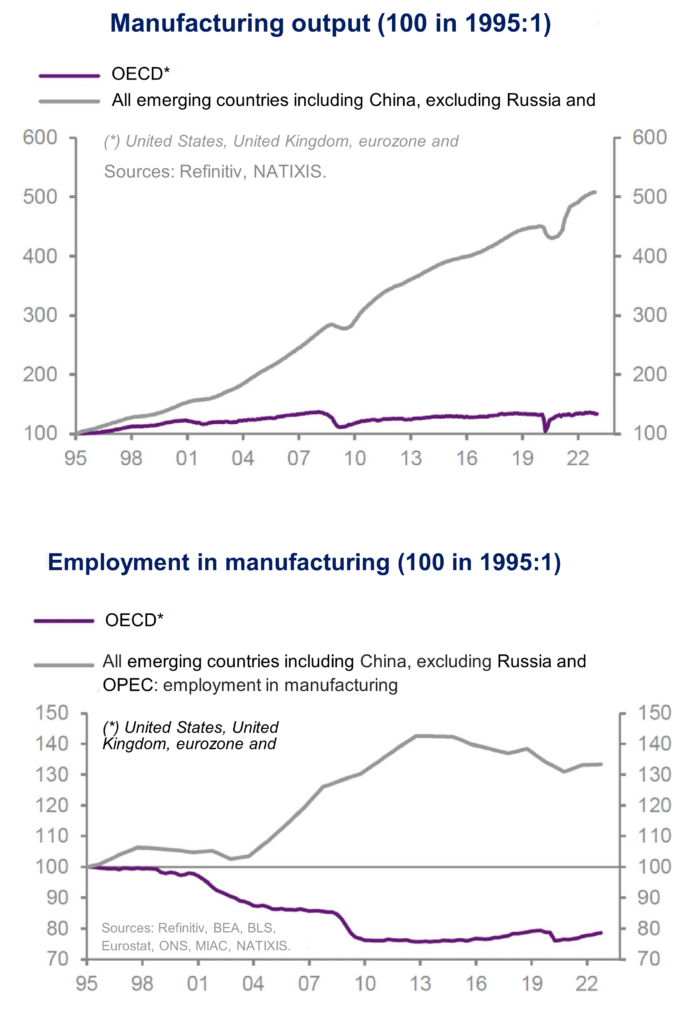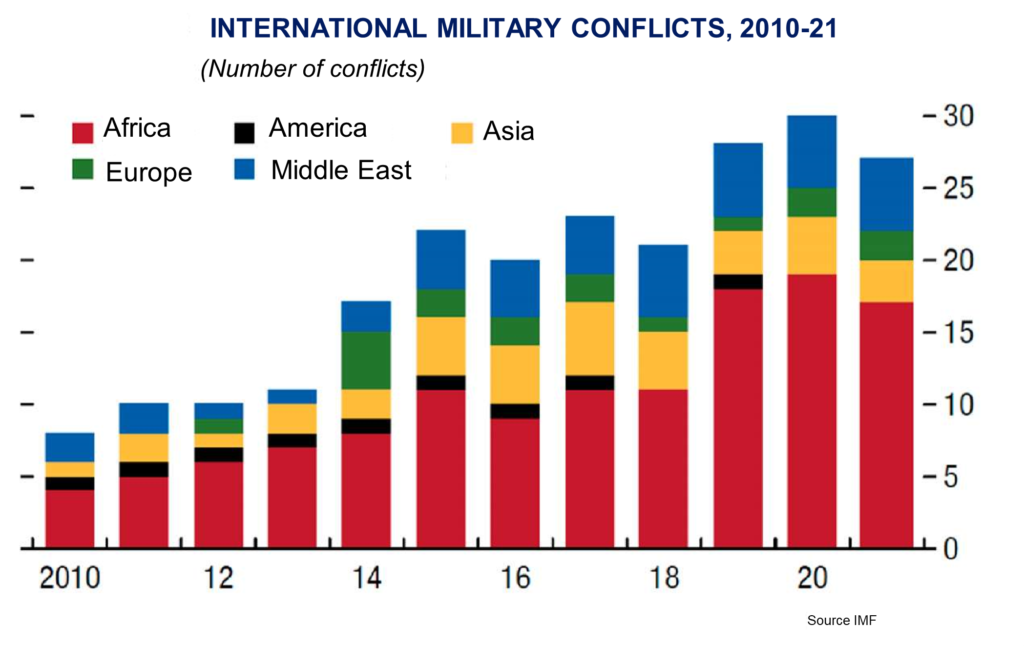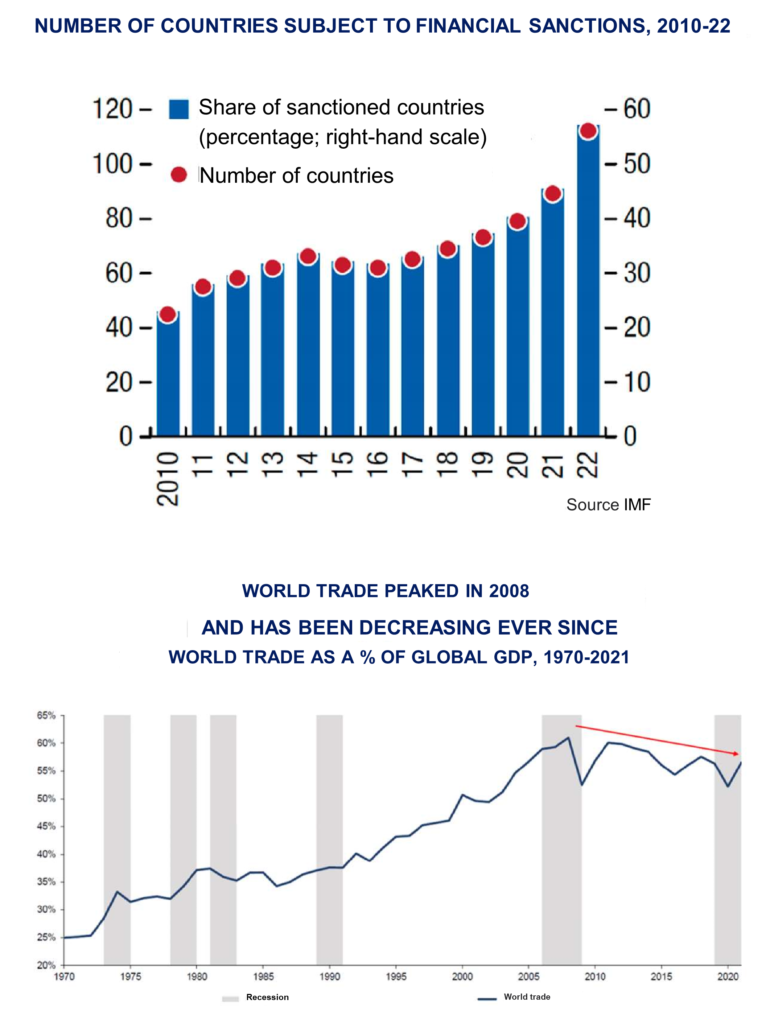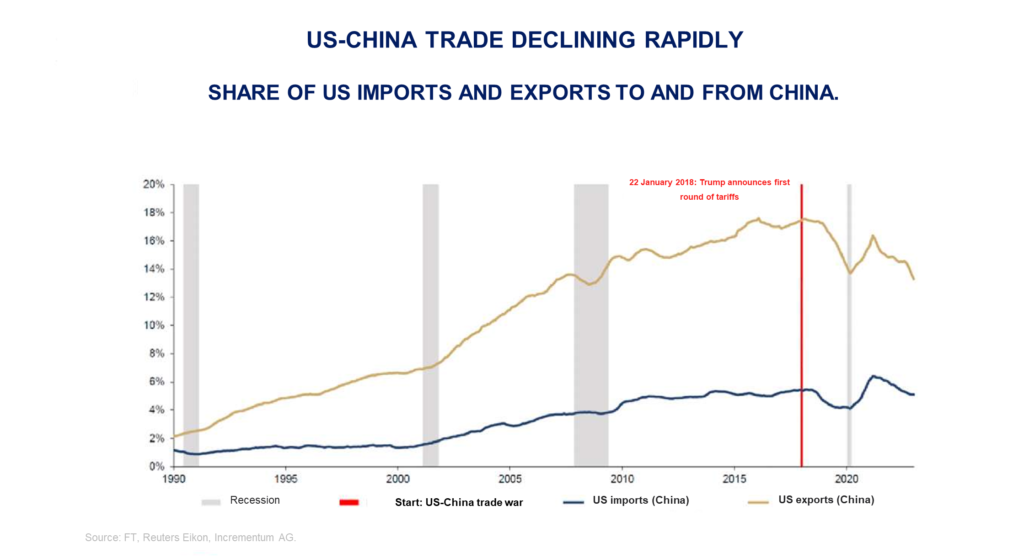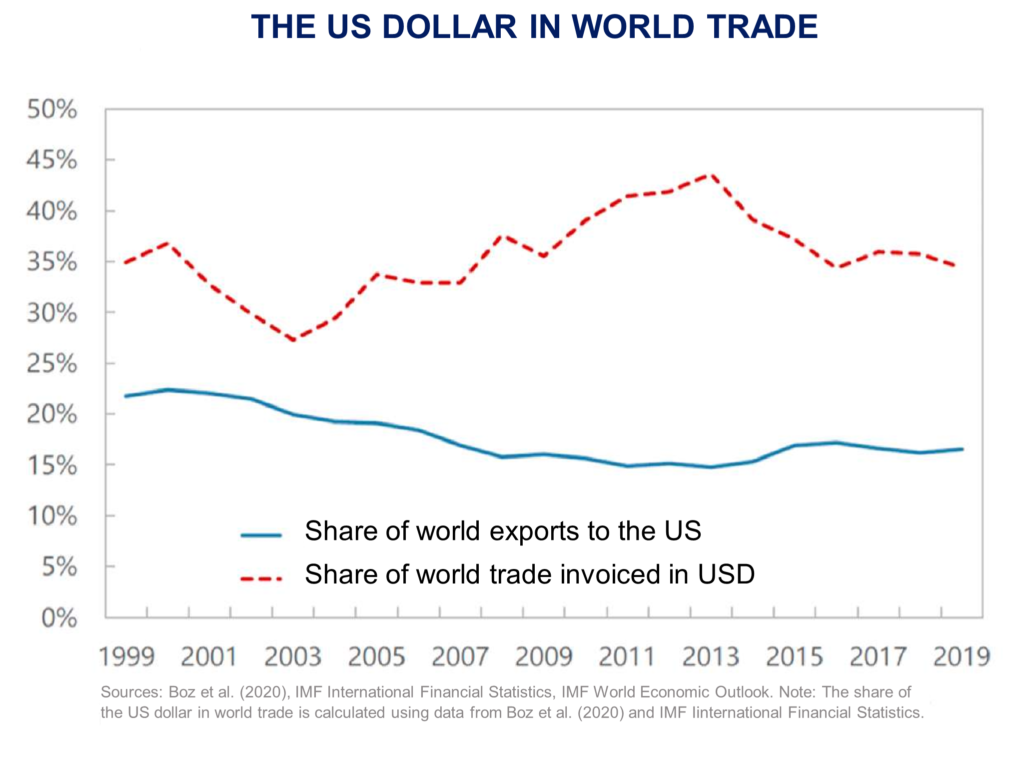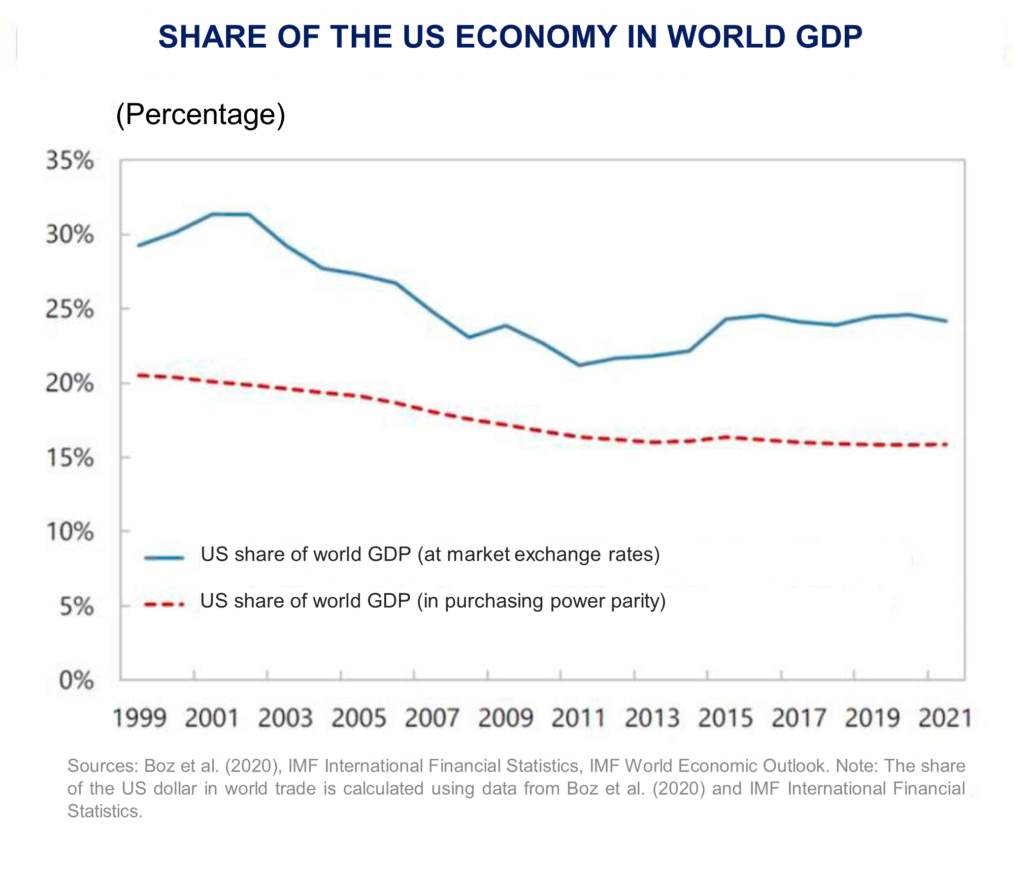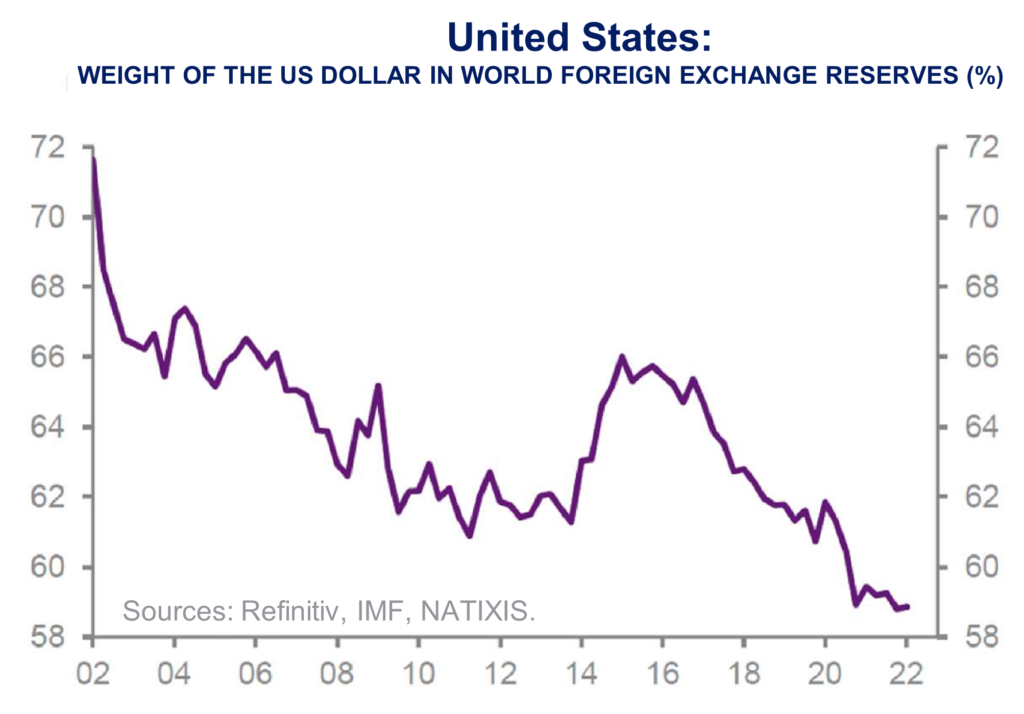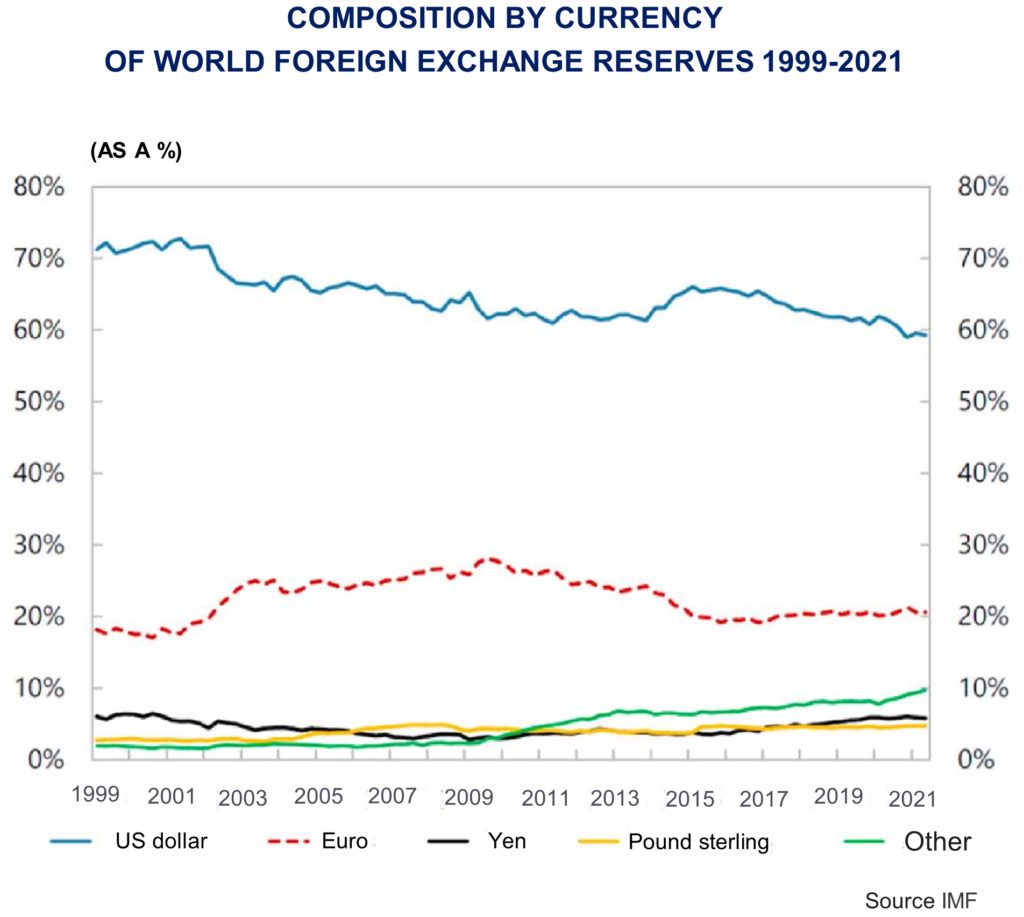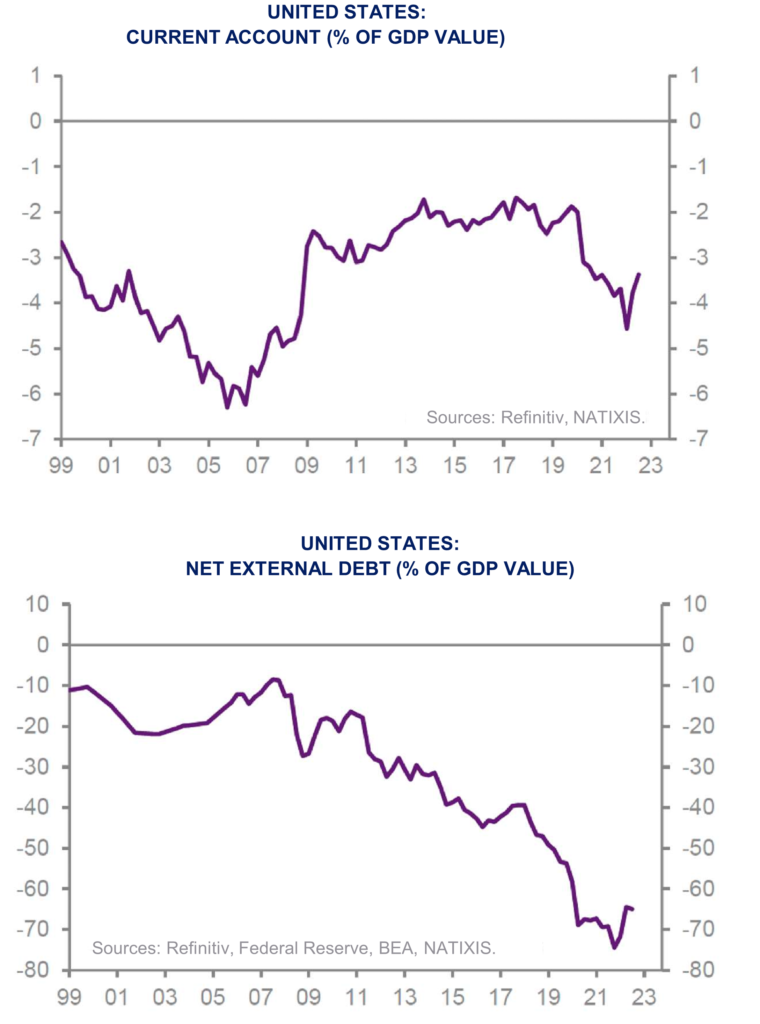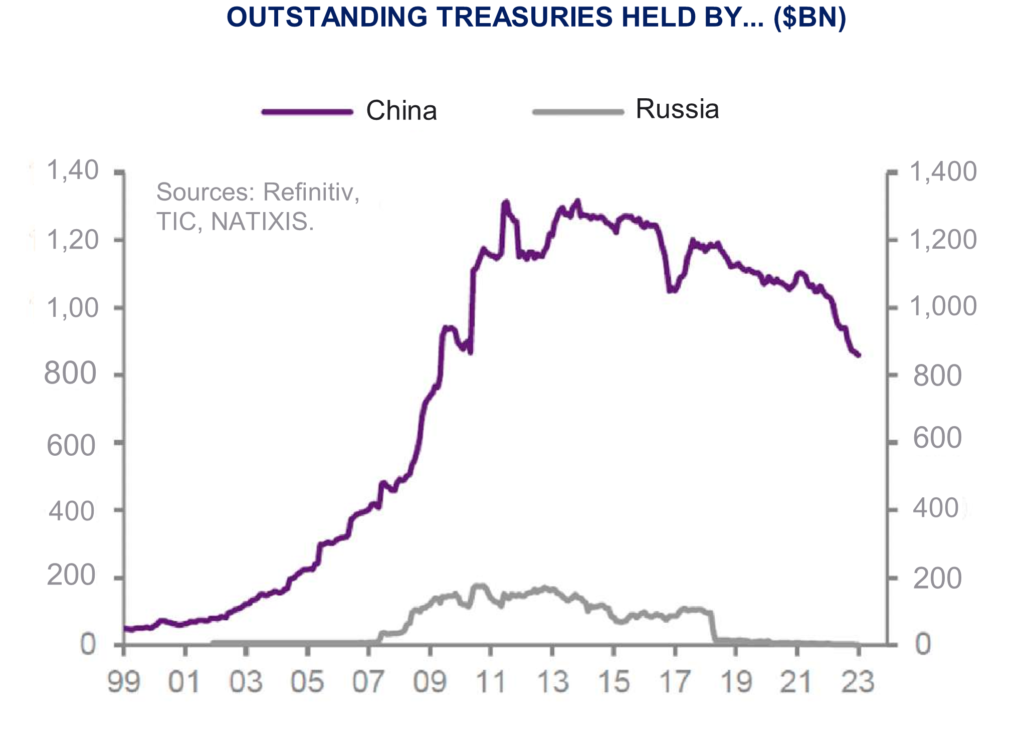For three decades, monetary policies have adapted to what has been a profound change in the methods of regulating the economy. After the successful fight against double-digit inflation in the first half of the 1980s, through a monetary policy which led to peaks in interest rates but which inevitably caused a deep recession in the process, the economy gradually changed its ways of self-regulation. Monetary policy also changed.
The cyclical downturn in inflation – essentially caused by the sharp slowdown in the economy due to skyrocketing interest rates – gradually led to a structurally low inflation regime. Monetary policy was not the only reason here, or even the major reason. The 1980s were indeed, on the one hand, the moment of financial liberalisation – financial deregulation and globalisation (cross-border liberalisation of capital movements), in the financial sphere. And, on the other hand, in the real sphere, the moment of the beginning of globalisation which was strongly heightened in the following two decades.
Financial globalisation puts increased pressure on the interest rates of countries experiencing more inflation.
And globalisation unquestionably leads to the emergence of competitive, cheaper labour, implying a necessary wage moderation in advanced countries (and a massive exit from poverty in emerging countries).
Finally, this moment was also that of the appearance of a new technological revolution, the digital revolution which, if it did not show a massive increase in productivity gains in the statistics, was a brake on the growth of wages in certain categories of human labor tasks through the possibilities of substitution with automation that it entails.
This double movement – a globalisation of the market of capital and goods as well as investments coupled with a technological revolution – was already known at the end of the nineteenth century and the beginning of the twentieth, with the same result in the appearance of a low inflation regime.
As a result of this new regime, since the 1990s monetary policy has not had to worry so much about fighting against possible excess inflation and has thus legitimately used its available means to promote a more consistent level of solid growth. To the point, moreover, that economic models have taken these in- depth changes into account and have provided a theoretical basis for the “new” monetary policy, going so far as to promote the hypothesis of a new capacity for the latter to allow a period of great moderation, in which real cycles were greatly mitigated and inflation was stable, if not completely, under control.
However, another phenomenon has not been taken sufficiently – if at all – into account, that of the reappearance of financial cycles. It was thought that financial stability increased when we ensured consistent growth and low and stable inflation. However, without much monitoring, parallel to this period of great moderation, phases developed – longer than the real cycles – of rising indebtedness (of the private and/or public sector depending on which instances) and the development of heritage asset bubbles (mainly shares and real estate, but art can easily be included).
Financial deregulation and globalisation, as the long view of history shows, facilitate this kind of phenomena linked to the intrinsic pro-cyclicality of finance.
The monetary authorities did not then take into account these financial cycles which see indebtedness and bubbles develop during the euphoric phase of the cycle, which then inevitably generate serious crises of solvency, liquidity and catastrophic explosions of the bubbles. Thus, from 1987 (equities), then in 1990-1991 and the following years (real estate), in 1997-1998 (sudden stop crises in emerging countries), in 2000 … (equities) and of course in 2007-2009 (debt and real estate), systemic crises have reappeared, with the bursting of successive speculative bubbles, as well as increasingly pronounced credit and over-indebtedness crises.
This return of financial crises provoked a wise reaction from international central banks and regulators to first of all avoid a catastrophic unfolding of these crises – and avoid the return of long periods of depression such as that following the crisis of 1929 – through remedial actions (the reaffirmed role of the central bank as lender of last resort) and also preventive efforts to limit the risks taken by the banks and in particular to impose on them sufficient capital requirements to absorb any significant losses.
prudential regulations were put in place, in order to limit the pro-cyclicality of credit and financial markets.
However an asymmetry became gradually rooted within monetary policy itself.
In order to avoid the effects of systemic crises, including the depression and deflation that could result from them, they made the correct decision of lowering their key rates (which are short-term interest rates) towards zero, or even for some below zero (including the ECB).
And faced with the limit of their action represented by the proximity of their rates to 0%, they launched in particular an innovative policy deemed to be unconventional, that of “Quantitative Easing”, which consists of directly taking full control of long term rates and risk premiums, particularly bonds, by purchasing securities directly on the markets, by significantly increasing their balance sheet in doing so. These policies prevented any self-destructive speculative boom, but also, by positioning long market interest rates below the level of the growth rate, they facilitated the deleveraging of the many players who needed it.
The problematic asymmetry in monetary policy stemmed from the fact that, for numerous reasons, central banks did not reverse (or tried to do so and then quickly abandoned) their Quantitative Easing even when growth had got back on track and the credit supply was returning to a satisfactory level. Thus, monetary policies have gradually facilitated, in both the advanced and emerging regions, a very strong valuation of the equity market and an even more visible bubble in the real estate market, as well as a sharp rise in the public and private debt relative to GDP in many countries. Even if rates had remained very low for even longer, the ensuing financial vulnerabilities could not have avoided becoming a marked financial instability forever.
But, in addition, inflation made a comeback as the lockdowns emerged, stoked by the effects of the war in Ukraine on energy and agricultural commodity prices… This brings us to the monetary policy turning point of 2022 and to the ridge path they must now follow.
The sudden revival of inflation necessarily led central banks to sharply raise their key rates.
On the one hand because inflation is very unfavourable to companies as well as households which cannot easily match the rise in prices through their own prices or wages. On the other hand, because a high and unstable inflation undermines the benchmarks necessary for an orderly, confident, and therefore uncontested price setting and wages, essential for an efficient economy. Moreover, it was necessary to finally move on from a period where interest rates were too low for too long, with the consequences described above.
All of this explains, among other things, after a moment of hesitation as to the transitory nature or not of inflation, the strong and rapid rise in central bank rates. And at the same time the beginning of Quantitative Tightening. But it also underscores the unique situation facing central banks today, which requires them to proceed very carefully and take small steps from now on.
Underlying inflation has not been defeated and therefore requires higher rates or at least being maintained for a long time at the current levels.
But at the same time, too fast or too strong a rise in rates can bring forth the accumulated financial vulnerabilities created by rates that are too low for too long. On the liabilities side of the balance sheets (too much indebtedness) as on the assets side (highly or overvalued assets) of many private and public players.
Interest rates at current levels, or even higher, have and will tend to strain the financial strength of many players.
Central banks have therefore entered into driving a monetary policy which will constantly scrutinise the state of global financial stability and will maintain a cautious approach. Without losing their essential credibility in their fight against inflation.
Finally, it should be noted that we have very probably expected too much from monetary policy alone. It is not a cure-all. It is crucial that fiscal policy is oriented in a manner which is compatible with the phase in which the economy finds itself and that the necessary structural reforms are carried out.
